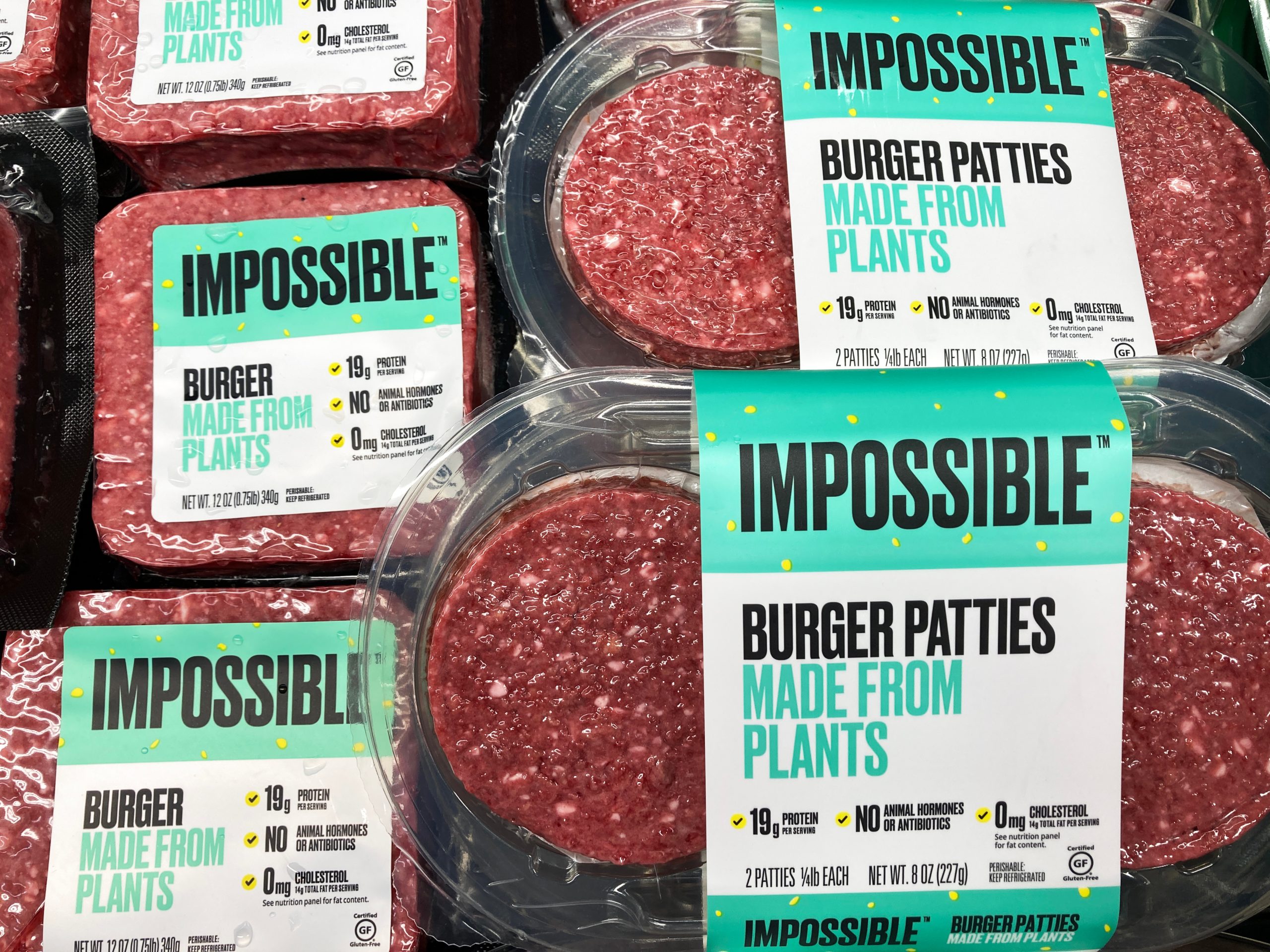Intellectual property: A key ingredient to plant based success?
- Like
- Digg
- Del
- Tumblr
- VKontakte
- Buffer
- Love This
- Odnoklassniki
- Meneame
- Blogger
- Amazon
- Yahoo Mail
- Gmail
- AOL
- Newsvine
- HackerNews
- Evernote
- MySpace
- Mail.ru
- Viadeo
- Line
- Comments
- Yummly
- SMS
- Viber
- Telegram
- Subscribe
- Skype
- Facebook Messenger
- Kakao
- LiveJournal
- Yammer
- Edgar
- Fintel
- Mix
- Instapaper
- Copy Link
Posted: 23 May 2023 | Eleanor Maciver, Lauren Woolley | No comments yet
Law firm Mewburn Ellis discusses why it thinks plant-based companies should adopt a comprehensive intellectual property strategy to thrive in the rapidly growing market.


Meat-free product popularity has grown rapidly in recent years, with sales expected to exceed £1.1 billion in the UK by 2024. Driven by shifting consumer attitudes, an uptake of plant-based and flexitarian diets, and a growing global demand for food, the plant-based meat industry is booming.
Plant-based diets have long been embraced for religious, ethical, and health reasons, with foods like tofu and tempeh providing a meat alternative as long as written records. In recent decades the focus has shifted from alternative protein sources to creating faithful meat substitutes that appeal to a broader consumer base.
The first-generation of these “plant-based meat” analogues, such as textured vegetable protein (TVP) and mycoprotein-derived Quorn, primarily targeted vegetarians but struggled to gain mass appeal. It’s hard to miss the recent surge in new plant-based meat products. These products are aiming for mass appeal and looking to match or even surpass conventional meat in taste and texture.
But what are some of the recent technological innovations behind this rapid expansion and how can brands make sure they stand out on the shelves among the growing number of plant-based options?
Fake it till you make it: creating a convincing plant-based meat substitute
Despite the growing number of people adopting a fully or partially plant-based diet, there is still a large demand for traditional meat which plant-based meats been unable to satisfy thus far.
Regularly cited complaints include that plant-based meat isn’t the same as traditional meat in some way.
The solution seems obvious; plant-based meat analogues which accurately recreate the taste, texture and cooking qualities of traditional meat products. However, achieving this is no mean feat!
Capturing the overall taste of conventional meat is complex; although individual flavours can be reproduced, the chemical changes undergone by meat upon heating also contribute to the flavour, and are harder to recreate. Innovators are working on identifying the agents responsible for these processes to improve flavour profiles. One notable example is Impossible Foods use of soy leghemoglobin which recreates the characteristically metallic meat-like flavour that comes from heam in traditional meats.


Impossible Foods uses soy leghemoglobin which recreates the characteristically metallic meat-like flavour in its plant-based offerings.
Another factor which can let-down an otherwise convincing plant-based meat alternative is the texture and mouthfeel. Plant proteins are typically globular and lack the fibrous characteristic of conventional meat, resulting in a less-than-authentic overall texture. Advances in processing technology can be used to improve the structure and consistency. Redefine Meat have found success with their proprietary ‘Meat Matrix Manufacturing’ 3D printing techniques to tailor a combination of “fat” and “muscle” to accurately mimic traditional meat structure.
Achieving the desired “cookability” of plant-based meats also poses a challenge. Animal-derived products undergo distinctive transformations during cooking which have so far been difficult to recreate. Plant-based company THIS has developed a proprietary fat composition (“Fat 2.0”) of blended plant oils and plant gum which mimics the cooking property of animal fats. This provides juiciness and rendering properties while reducing saturated fat content, simultaneously enhancing the cooking experience and health profile of plant-based meats.
On the subject of health profile, healthier, less processed or ‘clean label’ products are in high demand. A plant-based meat analogue that can convincingly recreate the characteristics of conventional meat products and meet these healthy eating goals is in high demand. Ecovative are looking to achieve this using their AirMycelliumTM technology ,which guides the growth patterns of mycelia, the “root-like” structures of fungi, to produce parallel fibres mimicking muscle tissue texture, density and flavour in just nine days. Their initial product MyTMBacon has quickly sold out of every production run, confirming the demand for products like these.
Thus complexity of the challenge to recreate meat products using plants is clear from the amount of innovation in the plant‑based meat sector.
Standing out from the crowd – Can Intellectual property help?
The short answer is yes – a well thought out intellectual property (IP) strategy is a key ingredient in the success of a plant‑based meat company.
With the growing popularity of plant-based diets, the plant-based meat market has become highly contested. The notable increase of plant-based meats on our supermarket shelves has been mirrored by a surge of patent filings.


The popularity of plant-based seems to be growing, with Soylent claiming that during the pandemic alone the market grew by 27 percent.
To stand out in this crowded space, a unique selling point (USP) is key – this can come from a combination of innovative technology, distinctive designs, and intelligent branding. A strong portfolio of intellectual property rights can protect this USP and prevent competitors from piggybacking off hard-earned technological advances and marketing.
Patents protect the innovation involved in producing cutting-edge plant-based meats. A broad portfolio of patents allows a company to maintain their USP by blocking competitors from using their technology. ‘Product’ patents can protect the components of the plant-based meat, including compounds, cells, plants or fungi with desirable properties such as flavour or texture. From a cookability perspective, changes in quantifiable properties such as weight, colouring or fat content upon heating are an attractive option for patent protection.
Any single plant-based meat product may be the result of multiple innovations each of which can be protected by a patent. A comprehensive patent strategy (eg covering all innovations) can help safeguard against challenges, such as the recent opposition in Europe and challenges in the US to Impossible Foods’ haem patents. A robust patent portfolio consisting of multiple layers of patent rights can be key for companies in the plant-based meat sector.
Trademarks provide companies with important protection for their brand, including names, logos and trade dress. Trademarks can be harnessed to entice new consumers and be invaluable in building loyalty and trust.
The visual appearance of plant-based meat products and packaging can be protected using design rights. Unique packaging or product appearance helps products to stand out on the shelves. Designs help prevent competitors from launching copy-cat products.
Brands must also differentiate themselves through compelling marketing strategies which work together with their IP. Established brands have tended to adapt tried-and-tested strategies to cater to a wider consumer base. For example, Richmond’s meat-free sausages have significant visual similarity to its classic sausages, including the colour palate, imagery and focus on taste.
In contrast, up-and-coming challenger brands trying to break out in the busy plant-based sector generally employ bold strategies, innovative social media campaigns and disruptive marketing tactics to differentiate themselves, as exemplified by the provocatively named ‘Vegan Cartel’ which launched in 2018.
While being plant-based is a significant aspect of plant‑based meats, it is essential to go beyond that in this crowded space and appeal to a broader audience for example by focusing on taste, health attributes, environmental sustainability, and unique technologies.
A combination of the right IP and the right marketing for your business can be the key to success in the busy plant‑based meat sector!
Conclusion
The plant-based meat industry continues to evolve at pace, driven by advancements in technology and consumer demand for sustainable and healthier food options. By implementing a comprehensive IP strategy and developing a compelling brand identity alongside this, companies can position themselves for success in this rapidly growing and competitive market.
About the authors




Lauren Woolley is a Trainee Patent Attorney working in the Life Sciences team at Mewburn Ellis. Her areas of expertise include cell biology, neuroscience, 3D imaging and biomaterials.









